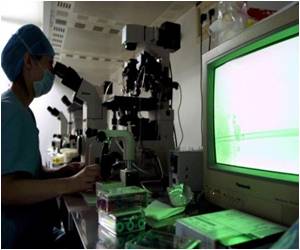The risk of severe maternal morbidity amongst women in Australia is increased by lower socioeconomic position, reveals a new study published in BJOG: An International Journal of Obstetrics and Gynaecology.

This case-control study aimed to explore the independent impact of socioeconomic position on severe maternal morbidities associated with direct maternal death (amniotic fluid embolism, placenta accreta, peripartum hysterectomy, eclampsia or pulmonary embolism) amongst women in Australia. Data were collected through the Australasian Maternity Outcomes Surveillance System. In total, there were 620 cases and 820 controls used.
Results show that socioeconomic status was directly associated with maternal morbidity, with women with severe maternal morbidity being twice as likely to come from the lowest socioeconomic group compared with women who did not have maternal morbidity.
Maternal age was also significantly associated with maternal morbidity, with women aged between 30 and 34 being 1.4 times more likely and women aged 35 and over being 2.3 times more likely to suffer from maternal morbidity.
Furthermore, having given birth previously was found to be protective against maternal morbidity, whereas women who had reported previous pregnancy complications were 1.3 times more likely to experience severe maternal morbidity.
The number of previous caesarean deliveries was also significantly associated with maternal morbidity, with one caesarean delivery having double the risk of morbidity and two caesarean deliveries having four times the risk of severe maternal morbidity compared to women with no previous caesarean delivery.
Advertisement
The authors of the study conclude that the risk of severe maternal morbidity amongst women in Australia is significantly increased by social disadvantage and future efforts in improving maternity care provision and maternal outcomes in Australia should include socioeconomic position as an independent risk factor for adverse outcome.
Advertisement
"Despite universal healthcare in Australia, free at the point of access, socially marginalised women experience poorer maternal health outcomes, in terms of specific severe maternal morbidities, than those from higher socioeconomic groups." This has wide-ranging implications for health policy and the provision of maternity services.
"Identifying high-risk women is critical for the prevention of adverse outcomes as it allows targeted interventions and intensive clinical management of specific groups. Future planning to improve maternity service provision must focus on socially disadvantaged women in order to improve maternal health outcomes."
John Thorp, BJOG Deputy Editor-in-chief said:
"The results of this study provide further evidence to highlight the link between maternal morbidity and other risk factors such as advanced maternal age and previous caesarean delivery. This is the first nationwide study in Australia to investigate the risk of severe maternal morbidity amongst women from different socioeconomic groups."
"Further studies are needed in countries with less accessible healthcare systems to investigate the impact of socioeconomic position and potential factors to improve it. Additionally, further investigation of the outcomes of maternity care amongst different ethnic groups may help to identify actions to reduce other inequalities which have been identified in the UK."
Source-Eurekalert









